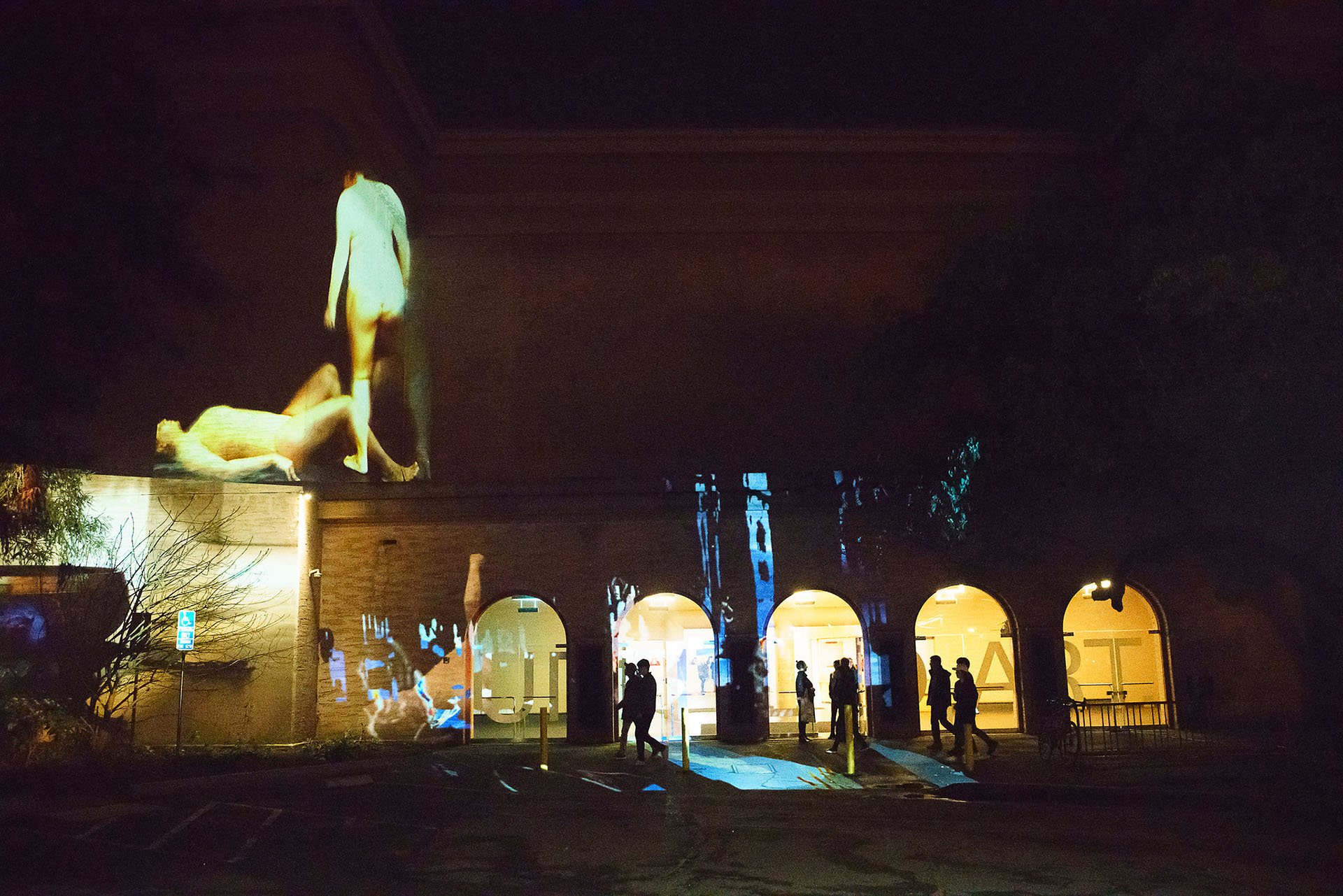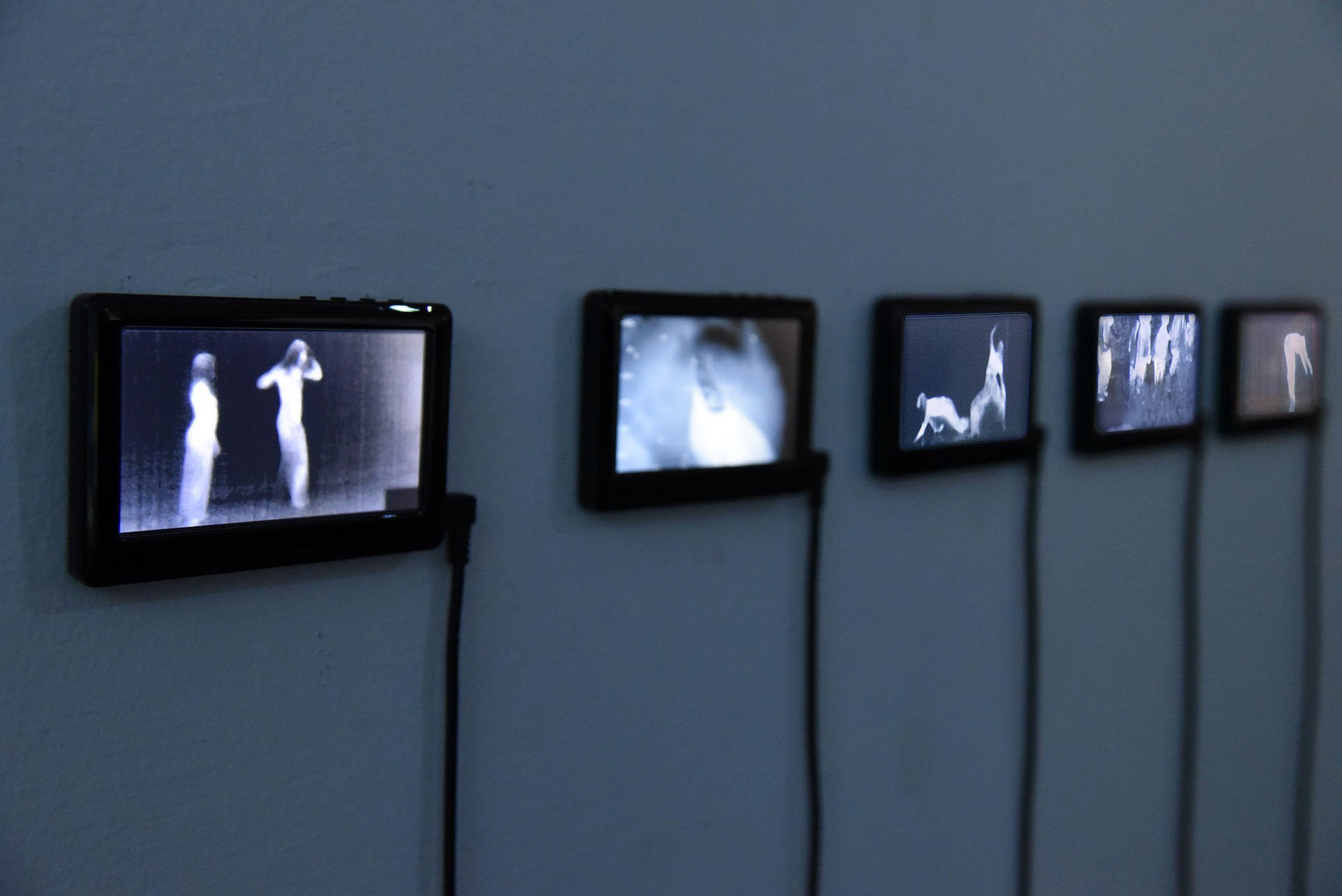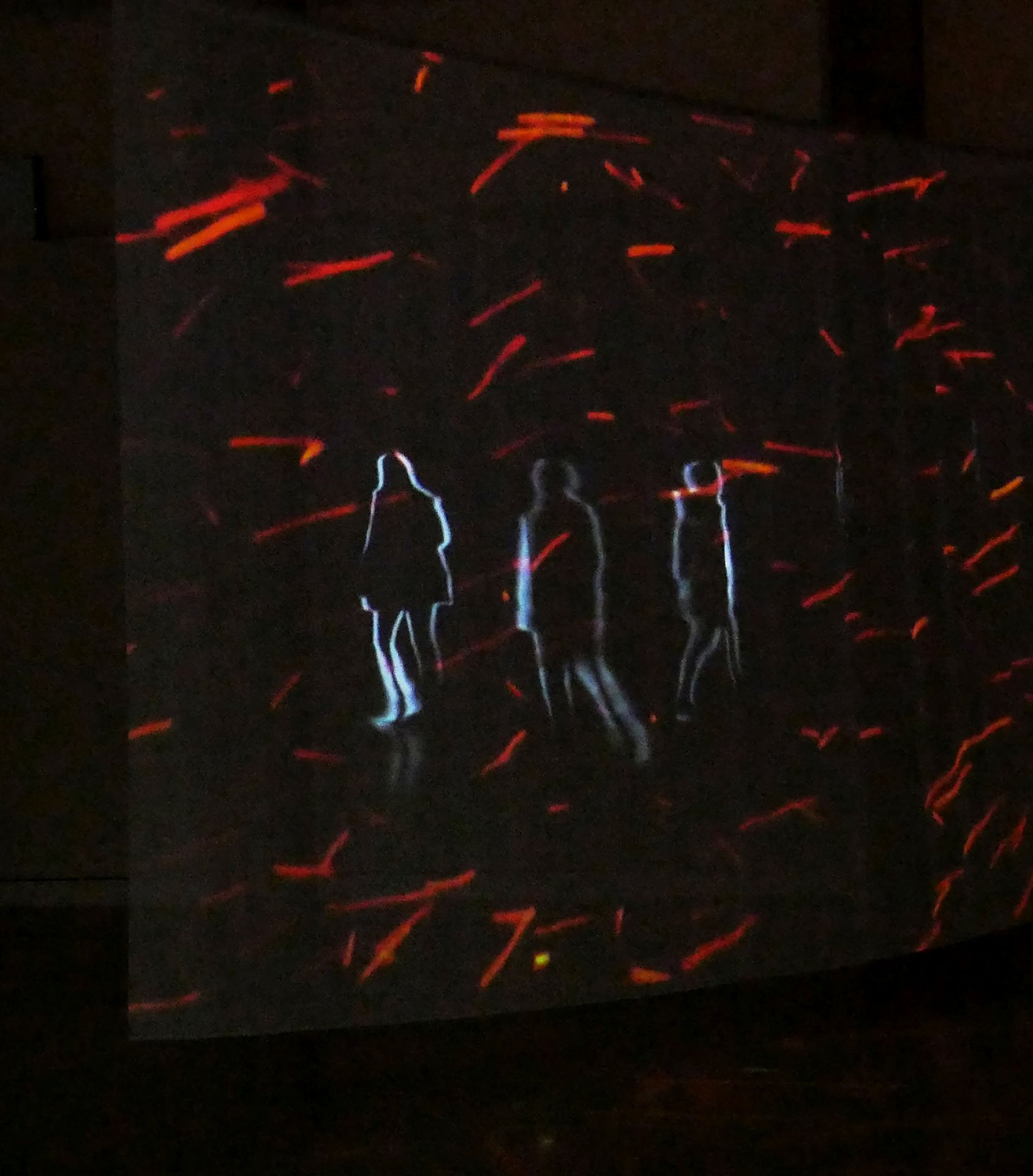
Borderline, 2017-2019
Borderline was a series of installations and performances, sited in different locations in Portland, and San Francisco and spanning eighteen months between December 2017 and May 2019. Borderline investigates the intersections of climate change, mass migration, government surveillance and embodied trauma. In each incarnation, creative coding combines surveillance video, scientific images tracing climate change, and live feeds of viewers within the installation. Borderline refers not as much to our current geographical border issues as to tipping points between harmony and chaos in the environment and in society, and also to individual psychological tipping points between empathy, and fear. At each site a different vantage point is assumed, making the larger project time based and territorial at an expanded scale. By immersing viewers in responsive environments, Borderline series of installations and live performances, provokes reflection on how our seemingly disparate emergencies are both completely intertwined and all enveloping.
Borderline/Peace Movements was presented as a participatory video projection on the building facade, utilizing live video feeds to create a conversation between the body of the audience, viewer and of the live performer. The video captured live on site—of participants' movements and gestures around the theme of "Mudras"—was further integrated into prerecorded imagery of environmental crisis, performance centered on generational trauma, and the language of gesture in a range of cultures. Peace Movements explored the contradictions of martial arts or performance art as a form of physically embodying peace, and looked at how the artists use the martial arts or movement arts as a way to resist cultural expectations.
Location/s: Palace of Fine Arts San Francisco
Sound by Guillermo Galindo
Live Performances: performances: Jaleesa Johnston, Justin Hoover, Yunuen Rhi and Featherpistol
Prerecorded performances: Sophia Wright Emigh, Jaleesa Johnston, Yunuen Rhi, Justin Charles Hoover Live Performance, Jaleesa Johnston
Media/Details: Media: Video installation, projection mapping, performance, sound
In partnership with Justin Charles Hoover and Collective Action Studio, Chinese Culture Center of San Francisco and Chinatown Community Development Center, funded by San Francisco Arts Commission IAC program
Borderline / Mapping was an immersive installation that broke apart the component parts and maps them onto the architecture of a busy public place frequented by all kinds of people. Like a deck of tarot cards each individual loop of content holds meaning. As they are mixed in real time different associations can be made. At times the mix was predominantly scenes of nature and felt more hopeful, at other times a sense of foreboding emerged as scenes of disasters driven by climate change and government surveillance video dominated.
Location/s: OpenSignal Portland, OR
Sound by Guillermo Galindo
Performers: Jaleesa Johnston and Sophia Wright Emigh
Prerecorded Performances: Sophia Wright Emigh, Jaleesa Johnston, Tahni Holt, Juju and Lisa Kusanagi, Eliza Larsen, Lu Yim
Media/Details: Media: Video installation, projection mapping, performance, sound
Borderline / Decameron looked back at the polarization brought about by an earlier period where the world seemed to be coming to an end, the Black Plague of the late middle ages and early Renaissance. Back then half the society,—as exemplified in Boccaccio's Decameron,—was challenging every societal piety and norm, while the other half was clinging ever more tightly to established doctrine and not only burning books and works of art that challenged the establishment, but even burning people who expressed what seemed to be heretical views.
Location/s: Oregon Contemporary Art Center
Sound by Guillermo Galindo, Karim Lakhdar, Kevin McDonald
Performers: Sophia Wright Emigh, Jaleesa Johnston
Media/Details: Media: Video installation, projection mapping, performance, sound
Borderline / InBody continued our investigations of how societal crisis impacts individuals on a subliminal level and results in embodied trauma. This chapter married technology and live movement to explore the cyclical nature of simultaneously invoking and healing ancestral trauma through the body. Creating movement that responds to the unpredictable mixing of images, the limitless shift within the performance mirrors the ways in which we process traumatic events within daily life. InBody changes constantly, and this fluidity reflects the complexities of memory and various ways of accessing collective and personal trauma through time and in the immediate experience of the body.
Location/s: Open Signal Portland, OR
Performers: Sophia Wright Emigh, Jaleesa Johnston
Media/Details: Media: Video installation, projection mapping, performance, sound
Borderline/The Map Is Not The Territory is the culmination of the Borderline series that used two 17-foot-wide scrims and a floor projection to create a monumentally scaled interactive environment. This chapter was developed through research with open source footage of government surveillance video of the U.S. border, refugees on the Mediterranean and European footage of their land borders during the crisis in Yugoslavia. Parallel research investigated U.S. Forest Service fire research footage and climate monitoring footage from NOAA. Live performance footage investigating generational memory completed the piece.
Mirror neurons are the empathy machine in humans. The sight of figures within the projections, activated a different quality of responsiveness for viewers and dissolved the separateness too frequently experienced when others are in crisis. In addition to the performance footage, a video camera placed the viewer in scenes of surveillance at borders around the world, as a way of making us remember we are all implicated and affected by these scenes of catastrophe or dystopia. Through creative coding, this series of scenes and video and audio loops randomly dissolved into each other. Like thoughts coming in and out of focus, the randomization mimics the “stream of consciousness” flow of time vital for this project.
Location/s: Portland Art Museum Portland, Oregon
Performers: Jaleesa Johnston and Sophia Wright Emigh
Prerecorded Performers: Sophia Wright Emigh, Jaleesa Johnston, Tahni Holt, Juju, and Lisa Kusanagi, Eliza Larsen, Lu Yim
Live Performance; Sophia Wright Emigh, Jaleesa Johnston
Media/Details: Media: Video installation, projection mapping, performance, sound










